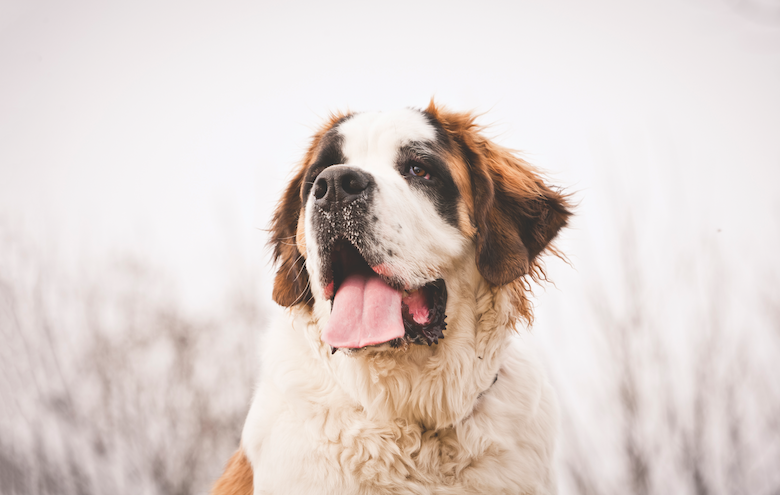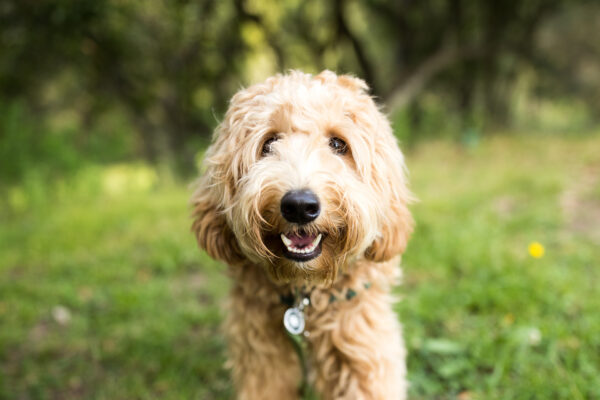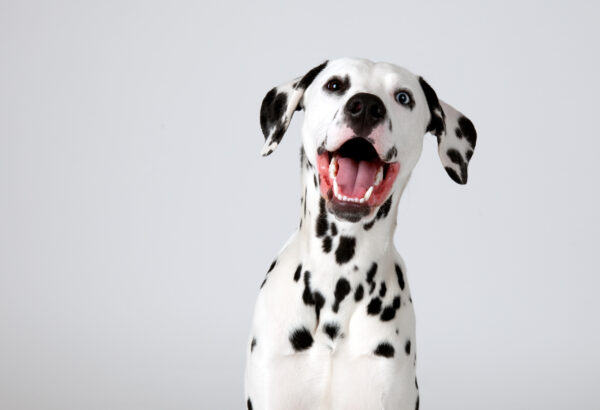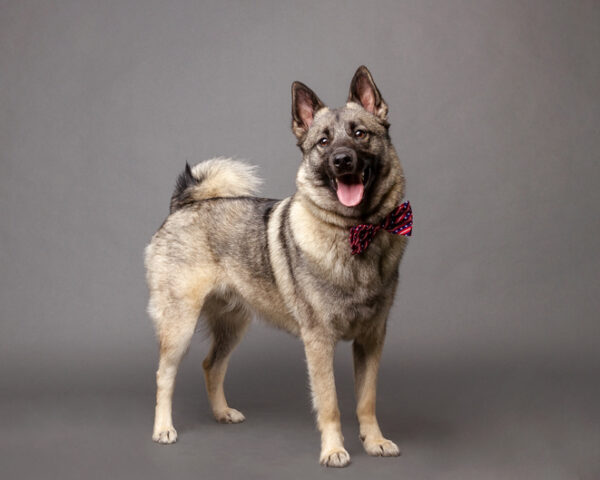The mighty Saint Bernard is one of our most recognizable canines. But with the breed appearing in so much of our literature, art and pop culture, how much do we know to be true and how much has been embellished over time? Enjoy these six fascinating facts about this red-and-white gentle giant.
The 6 Facts About the Saint Bernard
1. Alpine history
In the middle of the 11th century, Bernard de Menthon, an Augustine monk, founded a monastery and hospice in the only pass through the Alps between Italy and Switzerland. It was later named the Great Saint Bernard Pass, having been the site of so many heroic rescue tales. The Pass is in excess of 8,000 feet above sea level and free of snow for only a few months a year during the warmest part of the summer. For travelers journeying by foot in treacherous weather, it was reassuring to know there were dedicated monks and their powerful dogs staffing the hospice. The earliest known depiction of the breed was two paintings done in 1695 by the Italian artist Salvatore Rosa. It is believed the dogs originated sometime between 1660 and 1670 and were probably the descendants of Mastiff-like Asiatic dogs that were brought to the region by the Roman armies. No written records exist to explain how the rescue tasks of these dogs evolved. They accompanied the monks on mountain patrols after bad snowstorms looking for missing or trapped travelers. The dogs seemed to have an uncanny ability to detect impending avalanches. Eventually, the bigger and stronger male dogs were sent in unaccompanied packs of two or three. Often the dogs had to dig through snow to find wayfarers. One dog stayed with the stranger to provide warmth, while the other would return to the hospice to alert the monks.
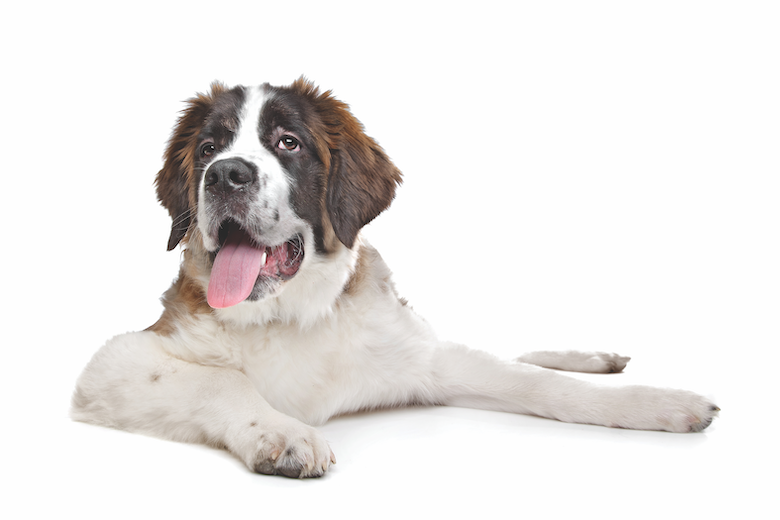
2. Revival and discovery
The snowstorms of 1816, 1817 and 1818 at the Great Saint Bernard Pass were particularly brutal, and many dogs perished while doing rescue work. The Saint Bernard strain living at the hospice came close to extinction. The records say that the monks replenished the strain by crossing their dogs with Great Danes and English Mastiffs. Later, Newfoundlands and Leonbergers that had been donated to the hospice were used beginning in 1830. Through selective breeding done by determined Swiss fanciers, there was an eventual return to the original hospice-type dog. It was the dog-loving and much-travelled English who first recognized this great breed in Switzerland. During all this time, the breed still had no official name.
The English called them Hospice Dogs, Holy Dogs, Alpine Mastiffs and Saint Bernard Mastiffs. Others referred to them as Mountain Dogs and Monastery Dogs. Many Swiss called them Barry Dogs to honor a famous hospice dog, Barry der Menschenretter, who was said to have saved more than 40 travelers during his working lifetime. Finally, in 1880, it was agreed to call the hospice dogs Saint Bernards.
3. Giant proportions
Strength and power are hallmarks of the breed. The American Kennel Club breed standard describes the Saint as a “powerful, proportionately tall figure, strong and muscular in every part, with powerful head and most intelligent expression.” His head is “imposing” with a “massive skull.” His back is “very broad,” with “well-developed” hindquarters and “very muscular” legs. The feet are “broad, with strong toes.” The standard states that the Saint’s height should be a minimum of 271/2 inches for males; a minimum of 251/2 inches for females. Although weight is not specified, male Saints are typically 140 to 180 pounds, with 120 to 140 pounds for females.
A Saint Bernard named Benedictine Von Schwarzwald Hof, living in Michigan, earned a place in the 1981 edition of the Guinness Book of World Records as the world’s heaviest dog, weighing in at a whopping 315 pounds!
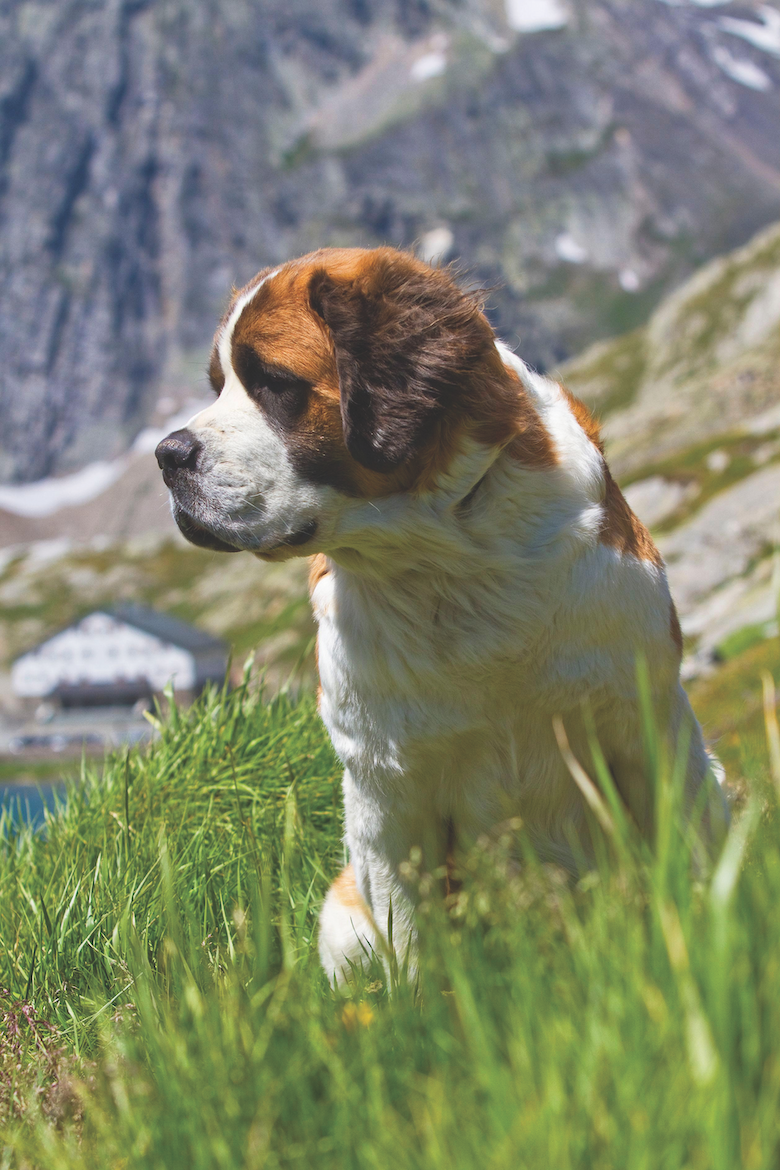
4. Kind and mild
The Saint Bernard’s legacy as a rescue dog is a source of pride to all lovers of the breed. Well-socialized Saints are calm, patient and sweet with adults, and especially good with children. However, given their size and strength, it is imperative that they be exposed to people and other dogs to prevent fearfulness, territoriality or aggression. Proper training must begin early to instill good habits. Children can easily be knocked over by a boisterous Saint, and even a strong adult can have problems trying to handle an unruly dog of this size. The Saint was bred to be a working companion and today remains a dog that lives to please his family. They have retained their natural ability for scent work, and many dogs compete in tracking events as well as search and rescue.
5. Fact or photo op?
Saint Bernards are often shown in old movies and classic cartoons wearing small barrels of brandy around their necks. Avalanche survivors supposedly drank the brandy to stay warm while waiting to be rescued. The monks of the Saint Bernard Hospice denied that any dog ever carried a cask or small barrel around his neck. They attributed that image to an 1820 painting by Sir Edwin Landseer, “Alpine Mastiffs Reanimating a Distressed Traveler.” However, the monks did keep casks around for photographs by tourists.
6. A media favorite
Few breeds have had as much media exposure over the decades as the Saint Bernard. Buck, in Jack London’s 1903 novel The Call of the Wild, is described as half Saint Bernard and half “Scotch shepherd dog,” but was a purebred Saint Bernard in at least one of the six movie versions. Stephen King’s 1981 novel Cujo features a sweet-natured Saint Bernard that contracts rabies, becomes crazed and terrorizes the residents of the fictional town of Castle Rock, Maine. Nana the Saint Bernard was the beloved companion to the Darling children in the Peter Pan movies, and J.M. Barrie, the author himself, owned a Saint named Porthos. The 1992 comedy film Beethoven featured a friendly but troublesome Saint Bernard and, in later sequels, his mate and their pack of naughty puppies. Saint Bernards have also been chosen as the mascots of numerous sports teams, among them the Colorado Avalanche, the Fighting Saints in Dubuque and the Northampton Saints, each with a Bernie; the New Orleans Saints, with their Gumbo; and Schottzie and Schottzie 02, the beloved pets and former mascots of the Cincinnati Reds’ colorful CEO and owner, Marge Schott.
Featured Image Credit: Mauro_grigollo | Getty Images
Read Next: All About the Alaskan Husky

